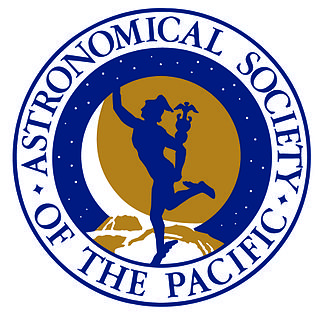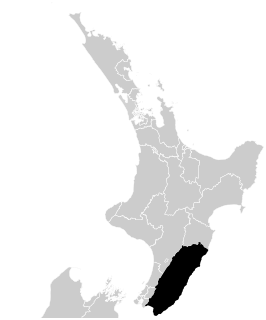
An observatory is a location used for observing terrestrial or celestial events. Astronomy, climatology/meteorology, geophysical, oceanography and volcanology are examples of disciplines for which observatories have been constructed. Historically, observatories were as simple as containing an astronomical sextant or Stonehenge.

Eleanor Margaret Burbidge, FRS is a British-born American astrophysicist, noted for original research and holding many administrative posts, including Director of the Royal Greenwich Observatory.

The Apache Point Observatory is an astronomical observatory located in the Sacramento Mountains in Sunspot, New Mexico, United States, approximately 18 miles (29 km) south of Cloudcroft. The observatory is operated by New Mexico State University (NMSU) and owned by the Astrophysical Research Consortium (ARC). Access to the telescopes and buildings is private and restricted.

Stardome Observatory is a public astronomical observatory situated in Cornwall Park in New Zealand's largest city, Auckland.

The Astronomical Society of the Pacific (ASP) is an American scientific and educational organization, founded in San Francisco on February 7, 1889. Its name derives from its origins on the Pacific Coast, but today it has members all over the country and the world. It has the legal status of a nonprofit organization.

Union Observatory also known as Johannesburg Observatory (078) is a defunct astronomical observatory in Johannesburg, South Africa that was operated between 1903 and 1971. It is located on Observatory Ridge, the city's highest point at 1,808 metres altitude in the suburb Observatory.

This page is about the scientific instrument maker. For other persons named Thomas Cooke, see Thomas Cooke (disambiguation)

Stonehenge Aotearoa, built by members of The Phoenix Astronomy Society near Carterton, New Zealand, is a modern adaptation of the Stonehenge ruins on the Salisbury Plain of England.

The Institute of Astronomy (IoA) is the largest of the three astronomy departments in the University of Cambridge, and one of the largest astronomy sites in the UK. Around 180 academics, postdocs, visitors and assistant staff work at the department.

South African Astronomical Observatory (SAAO) is the national centre for optical and infrared astronomy in South Africa. It was established in 1972. The observatory is run by the National Research Foundation of South Africa. The facility's function is to conduct research in astronomy and astrophysics. The primary telescopes are located in Sutherland, which is 370 kilometres (230 mi) from Observatory, Cape Town, where the headquarters is located.
The Goethe Link Observatory, observatory code 760, is an astronomical observatory near Brooklyn, Indiana, United States. It is owned by Indiana University and operated by the Indiana Astronomical Society, which efforts are dedicated to the pursuit of amateur astronomy.
The Canadian Astronomical Society is a Canadian society of professional astronomers, founded in 1971 and incorporated in 1983. The society is devoted to the promotion and advancement of knowledge of the universe through research and education, and its membership is open to people with a professional involvement in astronomy and related sciences.
Anderson Mesa Station is an astronomical observatory established in 1959 as a dark-sky observing site for Lowell Observatory. It is located at Anderson Mesa in Coconino County, Arizona (USA), about 12 miles southeast of Lowell's main campus on Mars Hill in Flagstaff, Arizona.

Melbourne Observatory was founded in 1862 to serve as a scientific research institution for the rapidly growing city of Melbourne, the capital of the colony of Victoria. The observatory was tasked by the Victorian government with maintaining an accurate time reference for the colony through observations of stars using a transit telescope as well as general astronomical research.

The Dearborn Observatory is an astronomical observatory located on the Evanston campus of Northwestern University. The observatory was originally constructed in 1888, though an agreement between the university and the Chicago Astronomical Society. In the summer of 1939, Dearborn Observatory had to be moved to make way for the construction of the Technological Institute.
Helen Lines was an American amateur astronomer. In her beginnings she was a deep-sky observer and astrophotographer. She was one of early members of the Phoenix Astronomical Society and a member of the American Association of Variable Star Observers. She and her husband Richard D. Lines built a small observatory in Mayer, Arizona. In 1992 they won the Amateur Achievement Award of the Astronomical Society of the Pacific for their work in the field of photoelectric photometry of variable stars.

Yunnan Astronomical Observatory an institution of Chinese Academy of Sciences sits on the Phoenix Hill in east suburb of Kunming, Yunnan, China. It is the only research observatory in the southwest of China. It is a state institution for astronomy research and public science education. There are 8 research groups and 2 observing stations in YAO.

The Georgetown University Astronomical Observatory was founded in 1841 by Father James Curley of the Department of Physics at Georgetown College. Father Curley chose a site on the college grounds, planned the building, and supervised its construction to its completion in 1844. Costs were initially paid by Rev. Thomas Meredith Jenkins, S.J., and Rev. Charles H. Stonestreet, S.J., who were Georgetown professors at the time. The observatory was used in 1846 to determine the latitude and longitude of Washington, D.C., which Curley determined to be latitude 38°54′26N and longitude 5h8m18.29s.

The Quito Astronomical Observatory is a research institute of EPN, the National Polytechnic School in Quito, Ecuador. Its major research fields are astronomy and atmospheric physics.

Susan Jane Cunningham was an American mathematician instrumental in the founding and development of Swarthmore College. She was born in Virginia, and studied mathematics and astronomy with Maria Mitchell at Vassar College as a special student during 1866–67. She also studied those subjects during several summers at Harvard University, Princeton University, Newnham College at Cambridge, the Greenwich Observatory in England, and Williams College.

















